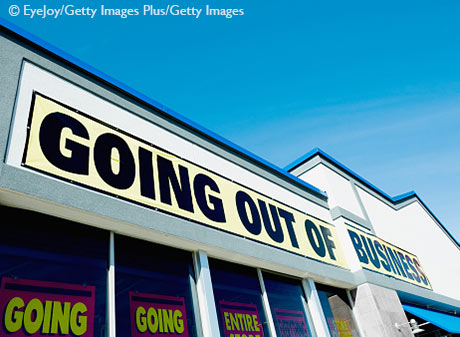The Connection between Delinquencies and Exit Rates

How much of a role did financial markets play in firms going out of business around the Great Recession? A recent Economic Synopses essay explored the connection between delinquencies and exit rates across U.S. industries.
Delinquencies and Exit Rates among Industries
Economist Fernando Leibovici and Research Associate Matthew Famiglietti compared industry-level delinquency ratesRepresented as the percentage of firms with credit payment delinquency of more than 90 days. and industry-level exit ratesMeasured as the percentage of firms that existed in 2007 but ceased to exist by 2011. between 2007 and 2011. As an example of the variation among industries, they showed the differences between the 10 industries with the smallest delinquency rates and the 10 with the largest:
- They noted that the 10 industries with the smallest delinquency rates had rates averaging 0.27%, with exit rates averaging 19.74%.
- The 10 industries with the largest delinquency rates had rates averaging 2.37%, with exit rates averaging 27.54%.
Leibovici and Famiglietti noted that relatively few firms overall were delinquent during the period studied. “Nevertheless, this statistic provides information about the industries’ financial health at the time and their potential resilience to shocks,” they wrote.
Correlation between Delinquencies and Exit Rates
The authors found a strong correlation between delinquency rates and exit rates in that industries with many distressed firms had higher exit rates. “That is, while there is wide dispersion in industry-level exit rates, we find that industry-level variation in financially related variables explains a significant share of it,” they wrote.
Leibovici and Famiglietti’s analysis implies that a 1-percentage-point increase in the delinquency rate is associated with a 3.85-percentage-point average increase in the exit rate. “That is, firms in industries with higher shares of delinquent firms were more likely to go out of business,” they noted.
While the authors noted that more research is needed in this area, they concluded that the positive relationship between delinquency and exit rates may be evidence that limited short-term access to financial markets might have played a significant role in determining which firms went out of business around the Great Recession.
Notes and References
1Represented as the percentage of firms with credit payment delinquency of more than 90 days.
2 Measured as the percentage of firms that existed in 2007 but ceased to exist by 2011.
Additional Resources
- Economic Synopses: The Role of Credit in the Exit of Firms Across U.S. Industries During the Great Recession
- On the Economy: The Ties That Bind: The Auto Industry and the U.S. Economy
- On the Economy: Job and Wage Growth Since the Great Recession
Citation
ldquoThe Connection between Delinquencies and Exit Rates,rdquo St. Louis Fed On the Economy, June 4, 2019.
This blog offers commentary, analysis and data from our economists and experts. Views expressed are not necessarily those of the St. Louis Fed or Federal Reserve System.
Email Us
All other blog-related questions

